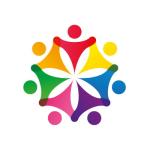What is it?
An asset-based approach is one that harnesses the skills, knowledge, connections and potential which already exist within communities. It is a way of thinking and doing that starts with strengths rather than problems.
Helping people to look at what they already have is the beginning of an asset based approach. Using these strengths communities are empowered to create stronger connections and build local capacity and expertise rather than relying on outside support.
Why do we use it?
Strengths and asset-based approaches focus on what individuals and communities have and how they can work together. Rather than on what they don't have or can't do. By working together towards shared outcomes everybody involved takes ownership. People involved have the power to influence their own communities which can lead to more meaningful results with greater local impact.
How does it work?
In its most basic form the process can be broken down into 4 simple steps.
Step 1. Reframe your conversation
Reframing the conversation. Instead of talking about issues or problems we start by focussing on what is working well and build from there to achieve our goals. For example if a local facility is closing down can you harness active community members to explore what you do have and how this can be developed.
Spend time making sense or exploring the goal with the people you are working with. Can you go about achieving the goal in another way?
Step 2. Map your assets
By starting with what is strong in an area or community you can "map the assets" or collect all of the strengths that already exist. These can be skills, knowledge, passions, interests physical buildings or people or anything that can be accessed to support community development.
Think about what assets you have and what are needed.
Step 3. Make the space for action
By creating the space for connections to be made and solutions to be shared, people come together to use their strengths to achieve agreed outcomes. Local communities know their areas and residents better than services and are best placed to help shape and design their own solutions.
Make sure you have created the space for people to come together and share individual and group assets, their thoughts and actions.
Step 4. Work together for positive action
This is where you come together to put your plans into action. There is not a ''one size fits all'' model because all communities are different. Depending on the strengths in your community it will take different approaches and paths but will always be based on the steps above.
Keep focussed on the main outcome you want to achieve, you may need to change the way you reach your end goal as you work with the assets available to you at the time.
How can we help?
For more information about the work of the Communities Team and how we can support asset based work in your area please contact us


